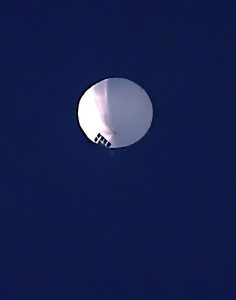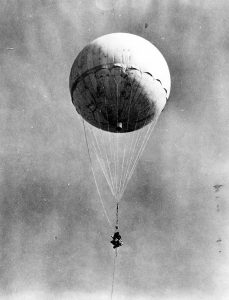
The evening was all about military pomp and circumstance. Hundreds of Canadian Armed Services personnel had gathered last Saturday night at the Beanfield Centre on the CNE grounds for Toronto’s premier social event in the military community. I actually landed a ticket and was seated at a table of Navy regulars and reservists. The 204th edition of the Garrison Officers’ Ball was well underway, when the Minister of National Defence arrived in time to address guests at the ball.
“I have important news to share with you,” Anita Anand said. “Today at 3:41 p.m. aircraft assigned to NORAD successfully took down (a) high-altitude airborne object. The object, flying at an altitude of 40,000 feet, had unlawfully entered Canadian air space and posed a reasonable threat to the safety of civilian flight.”

Minister Anand went on to explain that debris from the cylindrically shaped object was scattered over a remote area of Yukon, but that Canadian and American armed forces hoped to gather enough evidence to determine what the object was, where it came from and why it was there.
“I know I’m preaching to the choir,” Anand said, “but I’m proud to inform you that this was the first time a NORAD operation has downed an aerial object” over Canadian territory.
Her announcement, in front of hundreds of Canadian Armed Forces personnel, elicited sustained cheering and applause. In the past 12 days U.S. and Canadian military aircraft have tracked and shot down four “high altitude objects” over Alaska, Yukon, Lake Huron and off the coast of South Carolina. In each case Prime Minister Justin Trudeau and the President Joe Biden have suggested that China is responsible for launching these high-flying “spying” devices.
Last weekend government officials told reporters that the object shot down off South Carolina was the size of three school buses, weighed about 450 kilograms and contained surveillance equipment. But even as recently as this week, a Canadian defence specialist told media that’s just speculation, “We’re all in the dark right now.”
Well, I wonder whether any senior politicians or defence gurus in either Canada or the U.S. have read any of their own wartime history. If so, they’d have discovered a remarkable precedent – balloons launched from the Far East toward North America during the Second World War.
When my father, Alex Barris, and I conducted research for Days of Victory a book we co-authored back in 1995, we found a fascinating story published in the Winnipeg Tribune midway through the war. The story quoted a Manitoba trapper who’d heard a huge explosion, or what he described as “a great upheaval” in the bush near his camp. He then travelled two days by dogsled to report it to police.

Top-secret documents released at the end of the war revealed that between November 1944 and April 1945, Japanese Imperial forces launched nearly 10,000 bomb-bearing balloons into the Pacific Ocean jet stream; 300 of them with a 33-pound anti-personnel bomb landed in the U.S.
“It was the only thing they had that was capable of reaching the United States,” explained a Smithsonian historian, “but it was a long shot.”
Long shot or not, one landed near Gearhart Mountain in southern Oregon during the first week of May 1945. Subsequently, local newspapers published the disheartening story of a local clergyman, Archie Mitchell, taking his wife Elyse and their five children into the mountains for a picnic. As the reverend parked their car, Elyse and the children called to Archie, saying they’d found a strange object in the woods. Archie called out a warning, but it was too late. The bomb exploded, killing his entire family.
The Washington Post published a story this week describing the origin of the WWII balloon bombs. It explained that Japanese schoolchildren assembled the balloons “made of laminating layers of tissue paper from fibers of a mulberry tree.” The Japanese military then attached the bombs and released them into the jet stream (at 30,000 feet); a gas discharge valve and a cycle of dropping sandbags allowed the balloon to rise and fall as the gas expelled or cooled.
In 1944-45, nearly 500 U.S. military aircraft searched for the balloons over the Pacific, but only shot down two over North America. Another source said on one occasion USS New York was sailing towards Iwo Jima in 1945. Her crew spotted a silver sphere overhead, apparently following the warship; they opened fire “until the ship’s navigator realized they were attacking the planet Venus.”
Coincidentally, during a press conference in Washington on Monday, White House press secretary Karine Jean-Pierre was quick to tell reporters, “there is no indication of aliens or extraterrestrial activity with these recent takedowns.”
Then as now, fear and the unknown make us crazy.